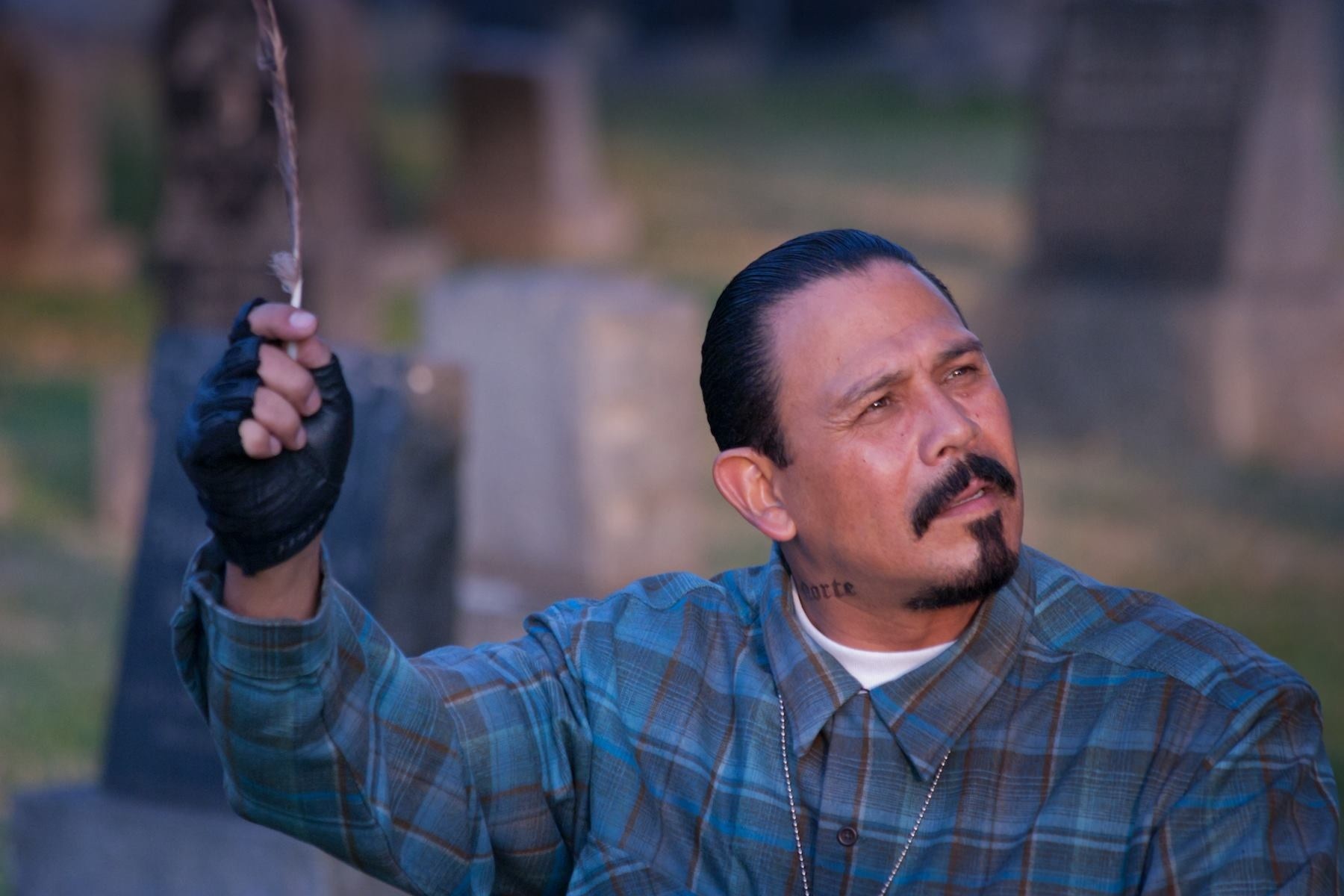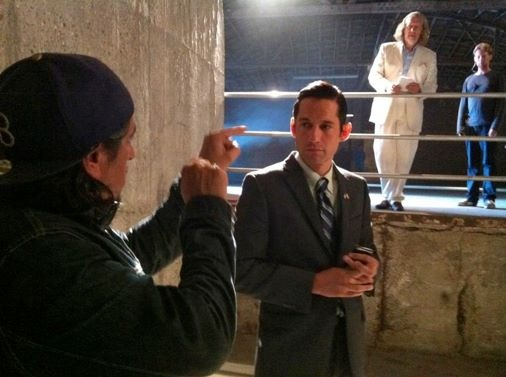
Last Wednesday evening, a large crowd gathered under the Los Angeles sunset at Grand Park to catch a free screening of the upcoming film Water & Power.
The film, directed by Culture Clash member Richard Montoya, is a new incarnation of the play Montoya wrote back in 2006 performed at the Mark Taper Forum. In it, two brothers Gilbert and Gabriel Garcia nicknamed “Water” and “Power” respectively by their father, an irrigation worker at the Department of Water and Power, grow up to be figures of authority in their community- Water becomes a senator poised to make environmental change in the city, while Power becomes a police lieutenant. As youths, their father imparts many wisdoms, but above all stresses the importance of sticking together. “Water can't exist without power. And power can't exist without water,” the senior Garcia says.
But their loyalty to each other is put to the test one night when Power manages to shake up the city's crime underworld after killing its top man- an action that leaves both brothers facing the repercussions.
]
Power is understandably stressed, while Water keeps a cool head as he tries to figure out a way to save his brother. Holed up in a seedy motel room, Power descends deeper into depravity as his fear and worry begin get to the best of him, while Water searches for a way to bust his brother out of impending doom. Montoya makes the best out of the small setting, and places these pillars of the community in a perilous situation to humanize them. To understand them better, flashbacks to their childhood upbringing of learning how to box each other under their father's instruction attest to the hard beginnings they had to overcome to make it to the top, as well as the competitive struggle for their father's love; it's Caleb and Aron Trask from East of Eden all over again.
The film was a hit at the Grand Park screening, an event which featured musicians Olmeca playing against a large backdrop on which footage of past Culture Clash skits were projected; cast members Gonzalez and Emilio Rivera, who played Power's gang connection and “fixer,” came out to introduce the film, as well as one of the film's backing producers and biggest proponents, actor Edward James Olmos. And of course, man of the hour Montoya greeted the crowd with his larger than life personality.
The event itself was more than a screening, it was a celebration; the fanfare behind the film has extended beyond Facebook likes and hashtags and into a mobilized effort to spread the word about the film by any means necessary, from hanging posters around various neighborhoods to blogging. It's no surprise that the Latino public has stepped up in this way, since Montoya is famous for his work with Culture Clash, and the movie resonates deeply with the Chicano community.
Montoya, along with fellow Culture Clash members Ric Salinas and Herbert Siguenza, have explored the narratives and stories of different marginal groups with their theater work for over thirty years, culminating in a 30th anniversary show last February at South Coast Rep. The three Culture Clash members are all pursuing their own side projects, with Montoya being the only one to delve in film, which he admits was a challenging transition. Accepted into the Sundance Institute in 2007, Montoya honed his screenplay writing skills under thirty different advisors including novelist Walter Mosley and filmmaker Catherine Hardwicke. In only twelve days, Montoya managed to make his movie, with a budget under a million dollars and, in his words, “sticks and stones.”

Take Montoya's skillfully written screenplay, two male leads who show compassion towards each other in their respective uniforms, and an array of characters who look like they were plucked from the streets of East Los Angeles (as Montoya tells it, a lot of extras weren't real actors), and the film brings a new level of storytelling to a familiar genre. With its opening shots of Los Angeles' urban sprawl and its dark cinematography, the film recalls the visual cues of film noir. And of course, there are some jabs at authority; one of the first shots in the film is a policeman taking a bong hit as he rides with his fellow officers in a patrol car. In a later scene, policemen are discussing protocol in their esoteric cop slang, subtitles clue the viewer in on their plans.
The film is also rich in its symbolism; early in the film, a deer appears in the middle of the street, while the hapless policemen stare in bewilderment. In Native American culture, the deer serves as a symbol of sacrifice and purity. Without getting too much into spoilers, the deer is an omen of sacrifices to come between the brothers, highlighting the purity of their brotherly bond and becoming incredibly symbolic of the sacrifices families continually make for each other.
Its those moments of symbolism and that send a wink to fans of Culture Clash, and bring you back to those moments of brilliance crafted onstage in their plays, whilst their critiques and examination of power that make for cautionary tales of ambition. For such a small indie film it's an intense ride of a movie, and you can't help but wonder what Montoya will turn his camera on to next.
Water & Power was written and directed by Richard Montoya
Starring Enrique Murciano, Nicholas Gonzalez, Emilio Rivera, Clancy Brown
Opens May 2
Email: am******@oc******.com Twitter: @aimee_murillo Follow OC Weekly on Twitter and Facebook!
Aimee Murillo is calendar editor and frequently covers film and previously contributed to the OCW’s long-running fashion column, Trendzilla. Don’t ask her what her favorite movie is unless you want to hear her lengthy defense of Showgirls.

